May 24 - 30, 2015: Issue 215
CHILDREN OF THE TROBRIAND ISLANDS
CHILDREN OF THE TROBRIAND ISLANDS
By George Repin
First visited by a French ship, Espérance, in 1793 the Trobriand Islands are an archipelago of low lying coral atolls off the eastern coast of Papua New Guinea in the Milne Bay Province. They are very different from other nearby areas of the province, such as Rabaul, which are of volcanic origin. 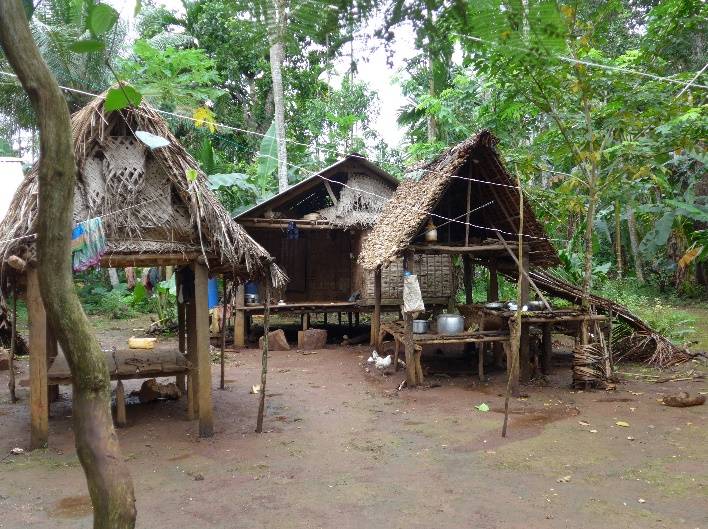 The islands remain hot and humid throughout the year.
The islands remain hot and humid throughout the year.
Most of the indigenous population of about 12,000 people lives on the main island of Kiriwina.
Left: A typical village
The people are mainly subsistence horticulturalists living in traditional settlements with a social structure based on matrilineal clans, which control land and resources. Yams are used as currency and the number of yams accumulated reflects wealth and power. Yam exchanges, in a traditional pattern of behaviour, have a major place in societal interactions.
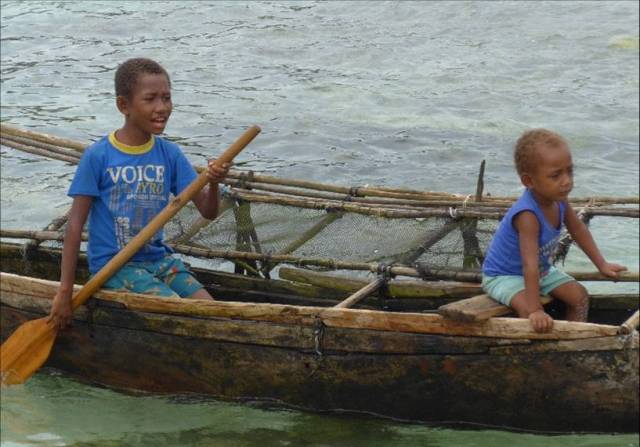
Right: Young boys in a canoe.
Each year, a man grows yams for his sister – and his daughter if she is married. 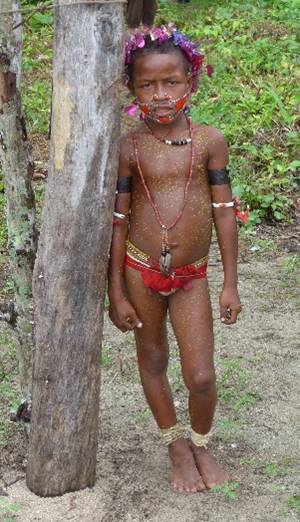 The husband does not provide yams for his wife.
The husband does not provide yams for his wife.
The more yams a woman receives, the more powerful and rich she is. Rituals during the yam season, including the display of yams and the processes associated with their storage in specially built yam houses are important elements in the society’s customs and communal life, and there is a relationship between yams and sexuality.
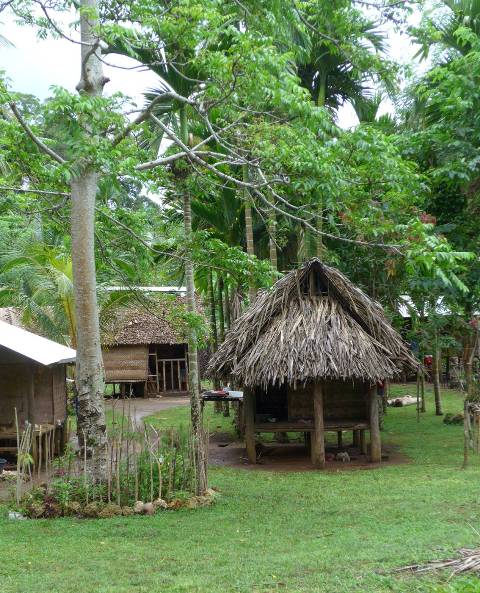
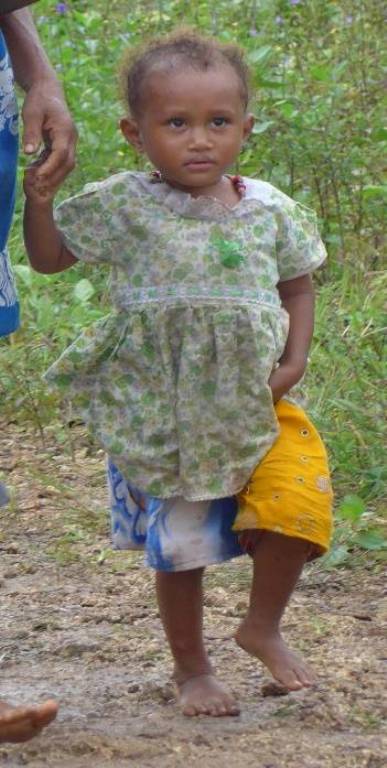
Another view of a village
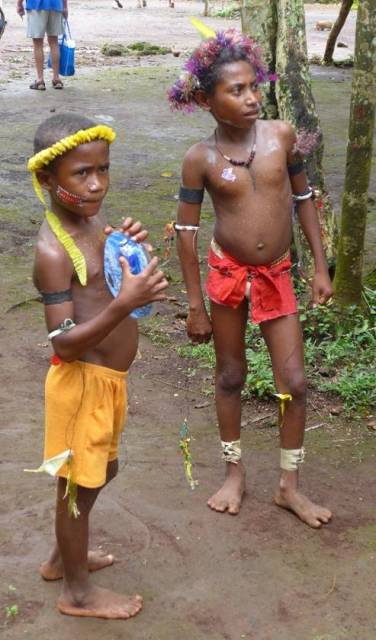 Trobriand children start playing erotic games with each other from an early age and in their young teens begin to pursue sexual partners which they change frequently. Women are as active as men in pursuing and rejecting lovers.
Trobriand children start playing erotic games with each other from an early age and in their young teens begin to pursue sexual partners which they change frequently. Women are as active as men in pursuing and rejecting lovers.
The relationship between sexual activity and pregnancy is not recognised because the yam, the major food of the islands, includes phytoestrogens and plant sterols whose effects are contraceptive. The practical link between sex and pregnancy, therefore, is not immediately apparent.
A Trobriand woman is thought to become pregnant through an ancestral spirit entering her body and leading to conception. “Even after a child is born it is the mother’s brother, not the father, who presents a harvest of yams to his sister so that the child will be fed with food from its own matrilineage, not the father’s.”
Because the customs of the Trobriand Islanders are in many respects very different from those of other indigenous people in the area they have been the subject of a number of extensive anthropological and ethnographic studies.
Possibly the best known is the collection of work of a Pole Bronislaw Malinowski who lived in the islands during World War I. His book Argonauts of the Western Pacific (1922) attracted considerable popular interest.
Pictures by George Repin in April, 2015
___________________________________________________________________
Argonauts of the Western Pacific: An account of native enterprise and adventure in the Archipelagoes of Melanesian New Guinea - (1932 Edition) Available to read online or download - Here
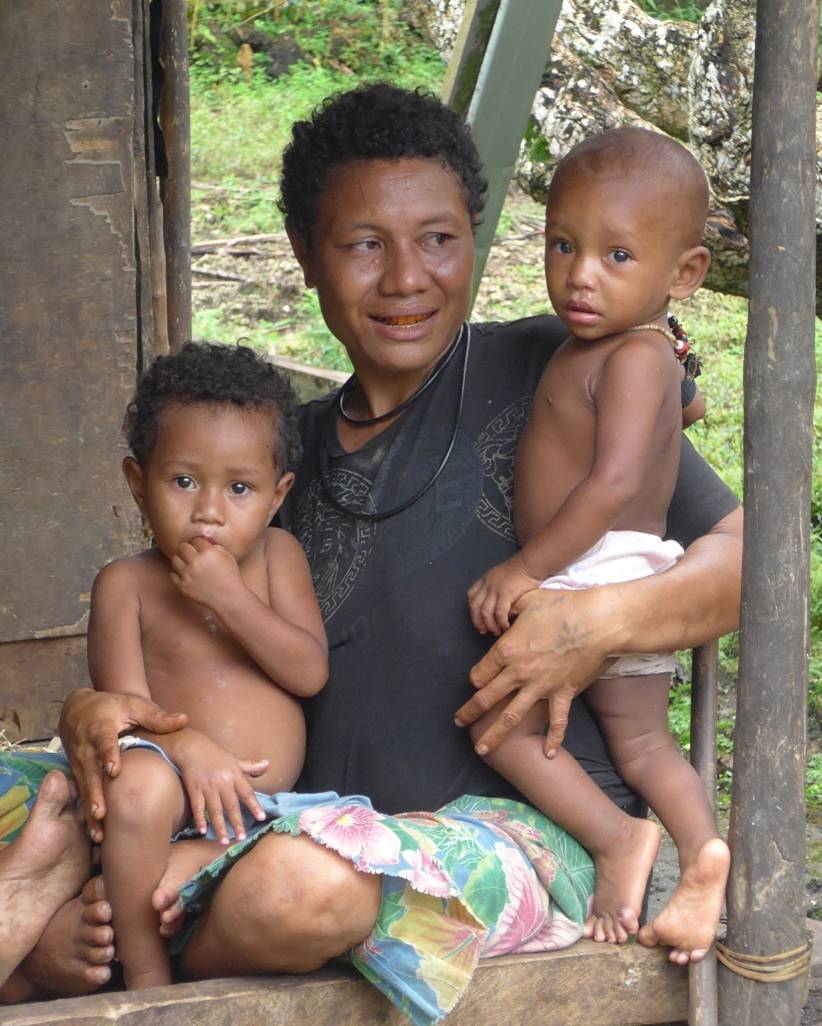
Previous Reflections by George Repin
The Nineteen Thirties Remembering Rowe Street The Sydney Push Saturday Night at the Movies Shooting Through Like A Bondi Tram A Stop On The Road To Canberra City Department Stores - Gone and Mostly Forgotten An Australian Icon - thanks to Billy Hughes Crossing The Pacific in the 1930s Hill End The Paragon at Katoomba Seafood In Sydney How Far From Sydney? Cockatoo Island Over The Years The Seagull at the Melbourne Festival in 1991 Busby's Bore The Trocadero In Sydney Cahill's restaurants Medical Pioneers in Australian Wine Making Pedal Power and the Royal Flying Doctor Service Pambula and the Charles Darwin Connection Gloucester and the Barrington Tops A Millenium Apart Have You Stopped to Look? Gulgong Il Porcellino Olympia Durham Hall Sargent's Tea Rooms Pie Shops and Street Photographers The Ballet Russes and Their Friends in Australia Hotels at Bondi Alma Ata Conference - 1978 Keukenhof - 1954 The Lands Department Building and Yellowblock Sandstone The Goroka Show - 1958 A Gem On The Quay Staffa The Matson Line and Keepsake Menus Kokeshi Dolls The Coal Mine At Balmain The Hyde Park Barracks The Changing Faces Of Sydney From Pounds and Pence to Dollars and Cents Nell Tritton and Alexander Kerensky Making A Difference In Ethiopia William Balmain J C Bendrodt and Princes Restaurant Azzalin Orlando Romano and Romano's Restaurant Waldheim Alcohol in Restaurants Before 1955 King Island Kelp The Mercury Theatre Around Angkor - 1963 Angkor Wat 1963 Costumes From the Ballets Russe Clifton at Kirribilli Chairman Mao's Personal Physician The Toby Tavern The MoKa at Kings Cross The Oceaographic Museum in Monaco The Island of Elba Russian Fairy Tale Plates Meteora Souda Bay War Cemetery Barrow, Alaska Cloisonné Tripitaka Koreana Minshuku The Third Man Photographs and Memories Not A Chagall! Did You Listen? Did You Ask? Napier (Ahuriri, Maori) New Zealand Borobudur Ggantija Temples Plumes and Pearlshells Murano University of Padua Ancient Puebloe Peoples - The Anasazi Pula The Gondolas of Venice Cinque Terre Visiting the Iban David The Living Desert Bryce Canyon National Park Aphrodisias The Divine Comedy Caodaism Sapa and local Hill People A Few Children Cappadocia Symi Jean-Marie Tjibaou Cultural Centre Aboriginal Rock Art on Bigge Island ANZAC Cove (Ari Burnu) 25 April, 1997 Hotere Garden Oputae
Copyright George Repin 2015. All Rights Reserved.